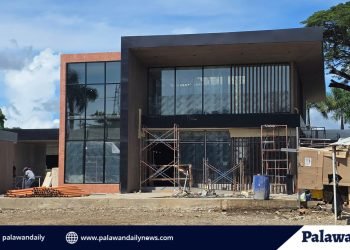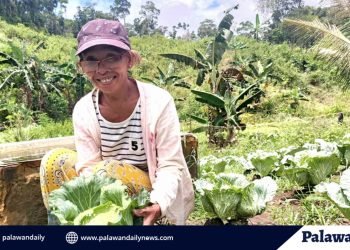Some Filipinos impressed by the beautifully handcrafted “tipo” mats by Jama Mapun women in Brookes Point, Palawan wanted to bring the art to wider audience describing this as a national cultural treasure that deserved to be passed unto the next generations.
This was after the tipo mat weaving of Jama Mapun women mat weavers was featured by vlogger and reel creator Lost Juan, the online persona of Filipino content creator Sandy Jones Pilarca. He is a respected travel vlogger known for creating high-quality videos that showcase the beauty and culture of the country through his YouTube channel, Facebook and other social media platform.
Jobert Obnimaga, Master Teacher II of DepEd Schools Division of Zamboanga del Norte described the Jama Mapun tipo mat weaving art as a national cultural treasure worth to be preserved citing that this is part of our Filipino identity, while Margie Ballesteros, DepEd’s director IV working at the Office of the Undersecretary expressed that she really wanted to visit these mat weavers in Brooke’s Point, Palawan to see them.
“Sana naman mabigyan ng pansin ng atong pamahalaan to support this Jama Mapun mat weavers” said Obnimaga.
In his social media content, Lost Juan or Pilarca described his visit in Oring-Oring Pandan Mat Weaving Center in Brookes Point as the most meaningful stop.
“One of the most meaningful stops during my time in Palawan was the Oring-Oring Pandan Mat Weaving Center in Brooke’s Point. Found in a quiet barangay, I had the chance to meet the incredible Jama Mapun women who’ve been hand-weaving ‘tipo’ mats from pandan leaves for generations,” vlogger and reel creator Lost Juan said.
He described how he was impressed by their craft, which he said tells a powerful story of Jama Mapun women.
“Watching them work folding, stitching, weaving with such focus and care, was humbling.
Each mat tells a story. Not just of their culture, but of resilience, patience, and pride. This isn’t just a craft, it’s a livelihood, a tradition, and a way for them to pass down something truly beautiful and enduring. It reminded me how powerful slow, intentional work can be and how much heritage lives in the hands of women who create,” he adds.
Dama Yarcia who is a student of University of the Philippines (UP)-Diliman said that these products should be made available during trade fairs in Metro Manila.
For a domestic tourists named Yol Anda, who have been visiting different places in the country, she wanted that weaving lessons be introduced by these Jama Mapun women as one of immersive activities that tourists can do.
“Im the type who’s a bit bored with touristic travel. I’d like to experience travel with immersion. Its more real,” she said.
Lea Leal-Gumandoy of Narra town, urged others to patronize our own local products, saying that this must also be taught to younger generations, while Therese Dolipas-Tolentino of La Trinidad Benguet describes the Jama Mapun women as powerful and creative, and she wanted their artwork gets exposure in other countries too.
Meanwhile, one Marites Alcovendas Santosidad who now worked in Malaysia as an OFW said that she wanted to purchase some tipo mats to be shipped to Malaysia.
For Erika, she proposed that this should be taught in school so that children in Palawan will become more connected and understand their roots.
“There are a lot of cultural heritage and traditions that we are slowly being forgotten in every province and ethnicity because it is not passed down to the younger generation,” she said.
Johannah Pangadaman Diron-Dimaporo, an owner of Café Domestique PH in Cagayan de Oro City is hoping that government agencies or any organization could initiate or sponsor a training or master class for weavers as a way to transfer the skills to younger generations. She emphasized that this art shouldn’t be forgotten.
The Jama Mapun are distributed over a wide area from Borneo to the southwestern part of the country and Palawan, but the largest concentration is on the island of Cagayan de Sulu in Region IX.























